Check valve for the pump: device, types, principle of operation and installation details
Installing a pump for a stable supply of water to the house requires the connection of additional valves. A non-return valve for the pump is mounted in the water supply system or on the suction pipe lowered into the well, a small but useful device.
You want to equip the pumping system yourself with back-stop valves, but don’t know how to do it correctly and which valve is suitable for these purposes?
We will help to understand the issue - in this material we offer to get acquainted with the design, the principle of operation of the check valve, the main varieties. And also we will provide step-by-step instructions for installing it.
The content of the article:
Purpose and principle of operation of the valve
The non-return valve, like any device for a water supply system, is installed in order to protect the network from any changes in flow parameters. Simply put, so that water is supplied continuously, without stops and interruptions, in the right amount.
A narrower purpose of the valve is to organize the movement of water in one direction and an obstacle to its return movement.
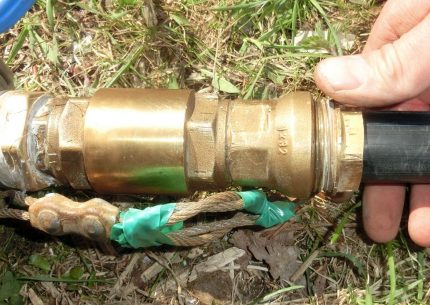
The tasks that such a valve installs on the pump line:
- stabilizes pressure and water pressure when moving from a well or a well;
- organizes the supply of water in the right direction - from the source to the consumer;
- Keeps the highway permanently full;
- protects equipment from pressure surges, force majeure situations and unscheduled repairs.
The principle of operation depends on the type and design of the valve. Consider it as an example of a device designed for tapping into a pipe.
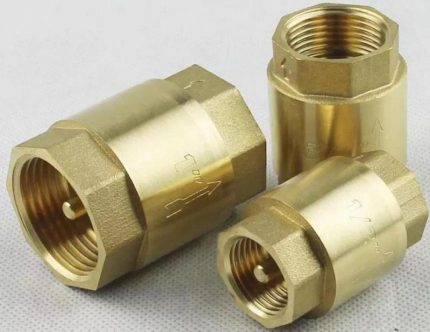
The main structural elements of the check valve are two working parts: saddle and locking element. To return the locking element to its primary position, a spring is intended.
The principle of operation of the check valve is simple. When the fluid flows in the forward direction, from the source to the internal networks, the valve disc moves inside the housing, opening a gap for water. If fluid moves in the opposite direction, the locking element is pressed firmly against the seat and completely covers the passage section.
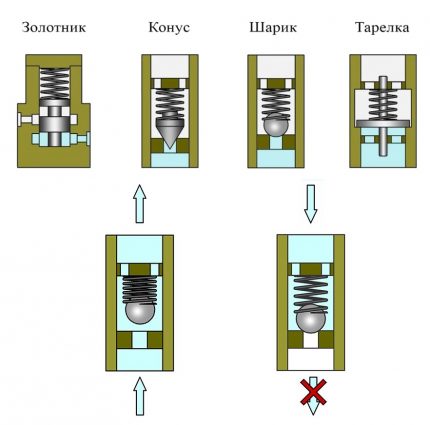
Without back-stop valves, when the pump was turned off, the liquid, according to the laws of hydrodynamics, would go back to the well or well.
Types of back-locking devices
At the installation site, all check valves designed for pumping equipment are divided into two categories:
- for mounting on the suction pipe of a surface pump or through an adapter to a submersible pump;
- for installation on the pipeline.
The former prevent the reverse movement of water and ensure that the system is filled continuously; the latter regulate water pressure.
We recommend installing both types of back-stop valves, as the functions of the devices differ. The valve on the suction hose additionally protects the pump from "dry running", prevents the occurrence of air jams, that is, it is responsible for the health of the pump. Even if the equipment is initially equipped with the “dry running” protection option, thanks to the non-return valve, you do not have to constantly fill up the water.
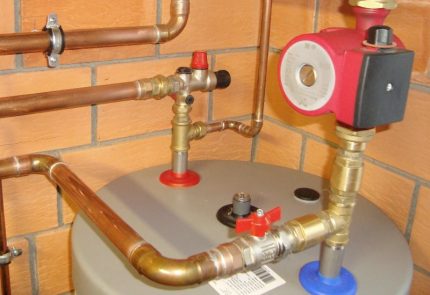
Valves that are installed on the pipe in the house wiring prevent fluid from returning outward to the pump or well. They maintain the necessary pressure of water and regulate pressure. The main function of pipe models is the protection of pumping and sanitary equipment from sudden pressure surges and water hammer.
Check valves for borehole pump
Check valves installed on the suction line are called bottom valves. They are used in a set of pumping stations to prevent the discharge of water from the network back into the well and maintain the pressure at the desired level.
Models differ in design. Usually used spring, less often - butterfly valves. Whereas in spring, the main working elements are a spring and a disk that blocks the flow, in case of casement, there are 1-2 valves, opening under the pressure of the liquid.
The method of attaching the device to a pipe or hose is also different. More commonly used products with muffed mounting method, less often - with flanged.
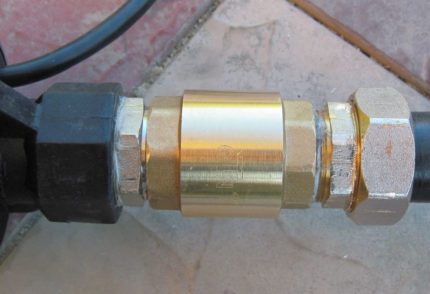
So that the valve does not become clogged and the sediment from the bottom of the source does not move further - into the pumping equipment, a filter with a fine mesh is installed under it.
Types of pipe check valves
Depending on the installation conditions and the features of the water supply system, valves are installed that differ in design, size, material and method of attachment. Some are designed for pipes of small diameter and for domestic use, others for centralized water supply.
Consider the basic classification of check valves for water.
Classification # 1 - by type of locking element
The part of the valve inside the body that is responsible for overlapping the section is of various configurations.
The following types of devices are distinguished by the locking element:
- Liftingin which the shutter device moves up / down depending on the presence or absence of water pressure in the pipe. The spring is responsible for the dynamics, and the spool acts as a shutter.
- Swivelalso equipped with a spool - flap or "petal". When the pump is turned on, it leans back and clears the path for the liquid; when turned off, it closes, blocking the cross section.
- Bivalveblocking the path to the water flow with two connecting leaves.
The movement of the locking element occurs in parallel, perpendicular to the axis or at an angle, so manufacturers recommend that some devices be installed only on horizontal pipes, others on vertical ones.
For domestic use, it is advisable to purchase spring valves, characterized by a simple design and ease of installation. If you decide equip yourself pumping system with back-stop valves, we recommend just such a model.
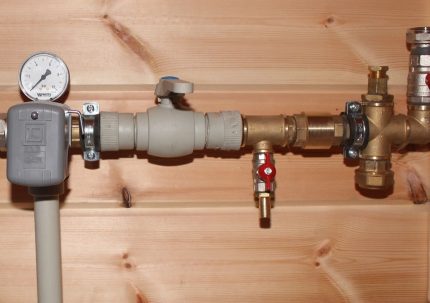
The design of the spring valve consists of the following elements:
- brass body (steel, polymer), consisting of two parts - the base and the cover with a saddle;
- disk element with a rubber seal that abuts the saddle;
- stockperforming centering and holder functions;
- spring to return the locking element to its initial state.
Such valves as rotary valves are almost never used in domestic water supply, but they are often used for industrial pipelines, the diameter of which reaches 0.5 and even 1.5 m.
Classification # 2 - by type of mount
Insertion into the pipe is carried out in various ways, which are selected depending on the pipe material and installation conditions.
The most acceptable are four types of valves:
- flanged;
- interflange;
- coupling;
- welded.
In systems coupled with pumping stations, it is advisable to use a coupling type with a spring mechanism and simple installation. But in more "serious" networks, for example, for equipment for supplying water to an apartment building, all of the above types are successfully used.
If you decide to install a check valve in the home pumping network, you should stay on the coupling model. Devices can be purchased in specialized stores at a price of 40 to 600 rubles. Product size - 1ˮ, 1 / 2ˮ, 3 / 4ˮ.
Classification # 3 - by material
The valve bodies are made of materials that reliably protect the internal mechanism, which are not deformed from the action of the external environment and fluid flowing through the pipes.
Check valve on the pipe happens:
- steel;
- cast iron;
- bronze;
- brass;
- plastic.
Products installed near centrifugal pumps in the heating system must be metal, since plastic is not suitable for hot water.
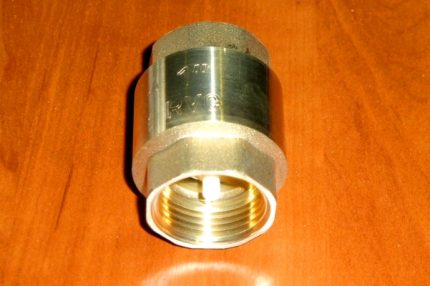
Cast iron valves are characterized by high weight and roughness of the material. But they are not used for the equipment of autonomous home networks, but are installed only for industrial operation on large-diameter pipes.
Devices from plastic lightweight and inexpensive, their installation is very fast. But they can not be applied to serious water systems at home.
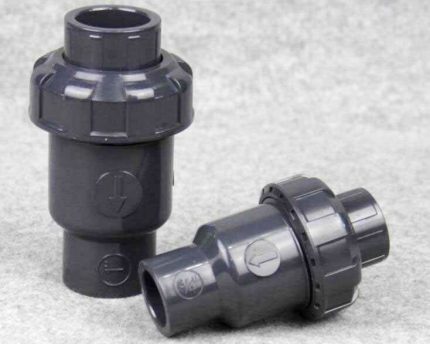
Internal parts - a saddle, locks, a stock - of valves are made of polymers, stainless steel or aluminum. They are durable and corrosion resistant. The acting element, a spring, is made of special spring steelhaving an extended service life.
In valves installed on centralized highways and industrial facilities that can withstand heavy loads, plastic or rubber seals.
Recommendations for installing such a valve
Consider one of the options for installing a check valve - on a submersible pump "Aquarius". The device is connected directly to the pump. As soon as the unit stops working, the valve shuts off the water so that it does not drain back down. Thanks to this, the line is constantly filled with liquid.
The procedure for connecting the bottom check valve:
If there is no arrow on the check valve indicating the movement of water, you can try to purge it. The valve is screwed to the pump on the side with which it is freely blown.
There are several rules regarding the location of the valve inside the well. If it is installed on the surface pump pipe, the distance to the bottom should be at least 0.5 m. The manufacturer indicates the exact parameters in the technical data sheet. Also observe the distance to the water surface - at least 0.3 m.

We recommend that you observe the following order: at the entrance, install ball valve, then a strainer, followed by a counter, and only then a check valve.
Some metering devices are equipped with built-in valves, but they are not very reliable, so it is better to play it safe and install the device separately.
Conclusions and useful video on the topic
Recommendations for the selection and installation of a check valve for a submersible pump:
Details of the design and purpose:
About the nuances of installing the valve in the following video:
It is not worth discussing the need to install check valves - this device is mandatory for the stable operation of the water supply system. It is used with submersible, and with surface pumpsto extend equipment life and protect the system from accidents.
Have experience installing a check valve? Or want to ask advice from our experts or more experienced users in this matter? Ask your questions, share your own opinion in the comments section below this article.

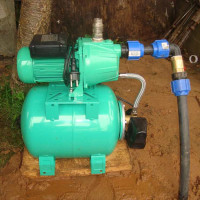 Ejector for a pumping station: operating principle, device, installation rules
Ejector for a pumping station: operating principle, device, installation rules  Overview of the water pump "Vometomet": device, types, decoding of markings and specifics of operation
Overview of the water pump "Vometomet": device, types, decoding of markings and specifics of operation 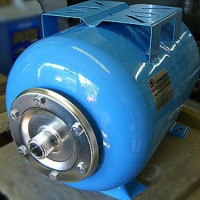 Hydraulic accumulator: device and principle of operation of a hydraulic tank in a water supply system
Hydraulic accumulator: device and principle of operation of a hydraulic tank in a water supply system 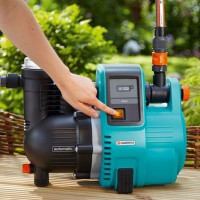 Self-priming pumps for water: types, principle of operation, recommendations for use
Self-priming pumps for water: types, principle of operation, recommendations for use 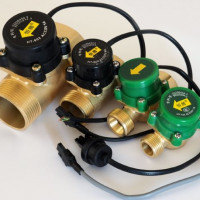 Water flow relay: device, principle of operation + instruction on connection
Water flow relay: device, principle of operation + instruction on connection 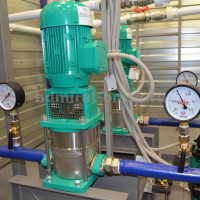 Principle of operation and design of a typical pumping station for water supply
Principle of operation and design of a typical pumping station for water supply  How much does it cost to connect gas to a private house: the price of organizing gas supply
How much does it cost to connect gas to a private house: the price of organizing gas supply  The best washing machines with dryer: model rating and customer tips
The best washing machines with dryer: model rating and customer tips  What is the color temperature of light and the nuances of choosing the temperature of the lamps to suit your needs
What is the color temperature of light and the nuances of choosing the temperature of the lamps to suit your needs  Replacement of a geyser in an apartment: replacement paperwork + basic norms and requirements
Replacement of a geyser in an apartment: replacement paperwork + basic norms and requirements